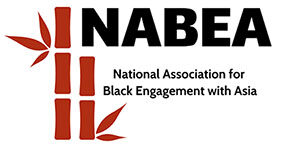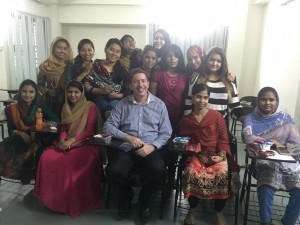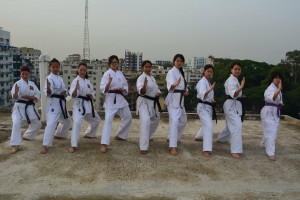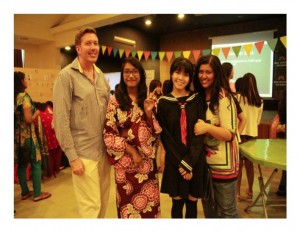US-Japan community:”Calling on Japan to open to foreign students and scholars”

In advance of Prime Minister Fumio Kishida’s Friday virtual meeting with President Joe Biden, the US-Japan community has issued a letter to the government of Japan urging it to relax its border restrictions in order to allow foreign students and scholars as well as family members abroad to enter Japan.
- Link to just the letter on Nichibeiconnect.com (“US-Japan Community Urges Government of Japan to Relax Border Closure”)
- Link to the letter and additional commentary on GoPetition.com (“Calling on Japan to open to foreign students and scholars”)
“Members of the US-Japan Network for the Future initiated this petition to call on the Japanese government to expand the range of foreign visitors allowed to enter Japan subject to vaccine, testing, and quarantine requirements. The petition will be delivered to representatives of the Japanese government in Washington, DC, and in Tokyo. We encourage Japan scholars, experts, and others involved in student exchange, regardless of nationality, to sign the petition.”
https://www.gopetition.com/petitions/calling-on-japan-to-open-to-foreign-students-and-scholars.html
Over 100 scholars, educators, policy practitioners, and bridge builders of the US-Japan community have signed the letter, a number of whom are JET alumni:
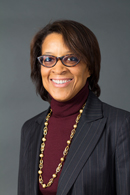
- Paige Cottingham Streater, Executive Director, Japan-U.S. Friendship Commission (Also co-founder and Board Chair of US JETAA, and one of the original founders of the JET Alumni Association back in 1988!)
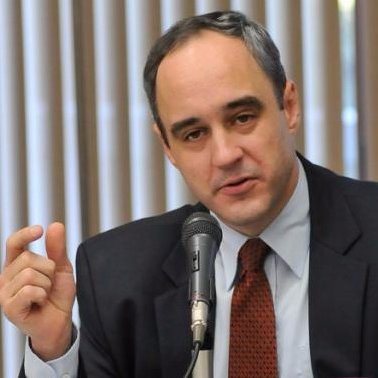
- James Gannon, Senior Fellow, Japan Center for International Exchange (JCIE/USA) (Also Vice-Director of US JETAA and a member of the JETAA USA Board of Advisors)

- Michael Green, Director of Asian Studies and Chair in Modern and Contemporary Japanese Politics and Foreign Policy, Georgetown University; Senior Vice President for Asia and Japan Chair, Center for Strategic and International Studies (Michael was a Monbusho English Fellow (MEF) which was like the beta version of the JET Program.)
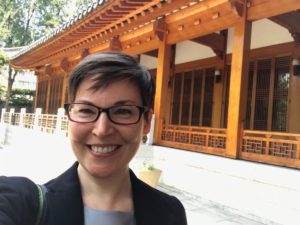
- Mary M. McCarthy, Professor of Politics and International Relations, Department of Political Science, Drake University
- Anand Rao, Assistant Professor of Political Science & International Relations, State University of New York at Geneseo
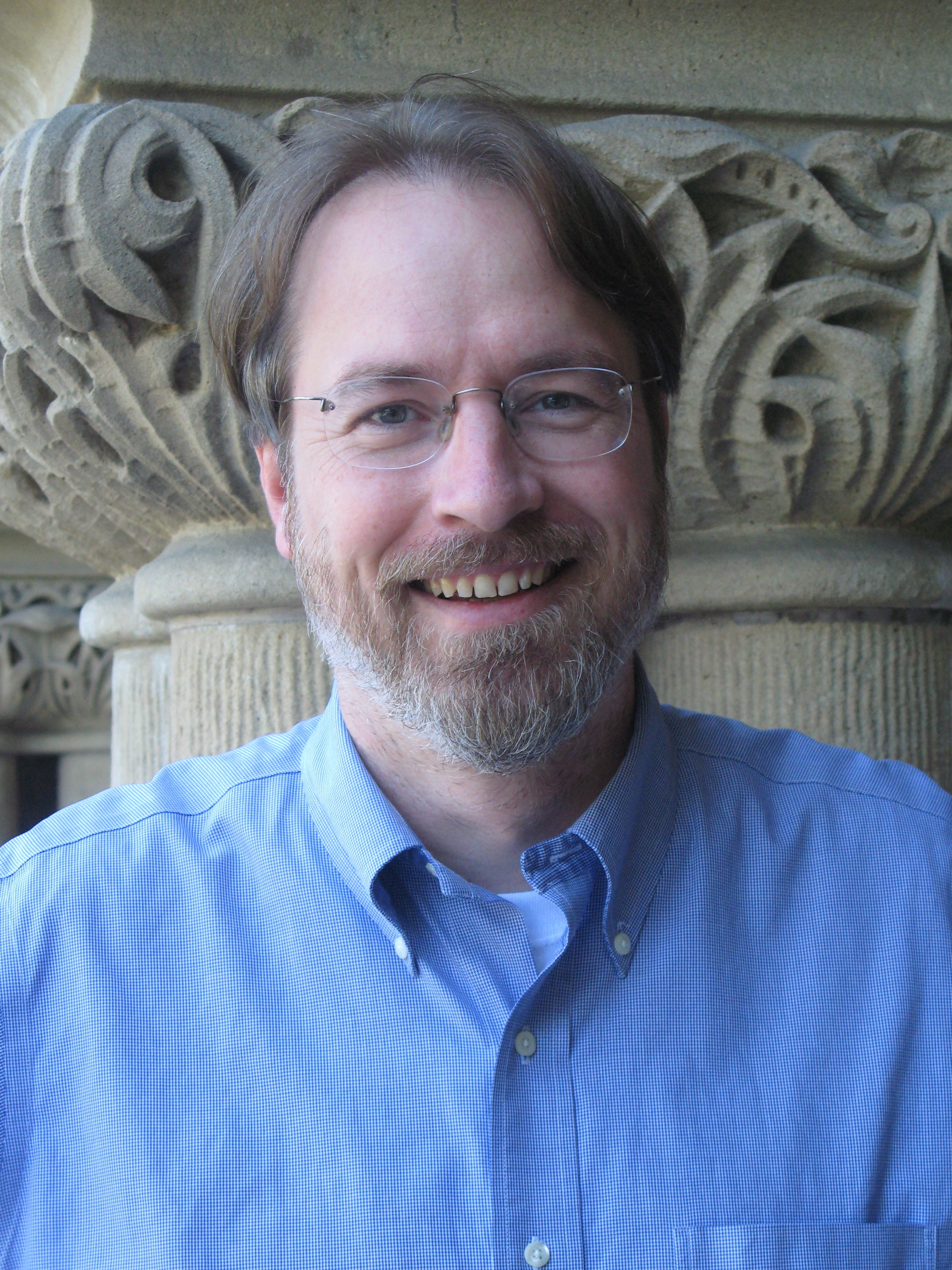
- Benjamin Self, Vice President, The Maureen and Mike Mansfield Foundation
- Note: There may be other JET alumni among the signatories. If you identify one, you can email jetwit@jetwit.com.
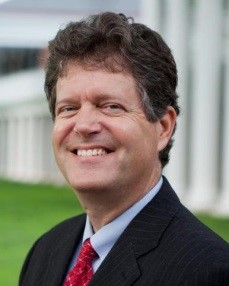
- Leonard Schoppa, Professor, Department of Politics, University of Virginia; Senior Advisor, US-Japan Network for the Future
- Ryan Shaffer, President of Japan-America Society of Washington DC
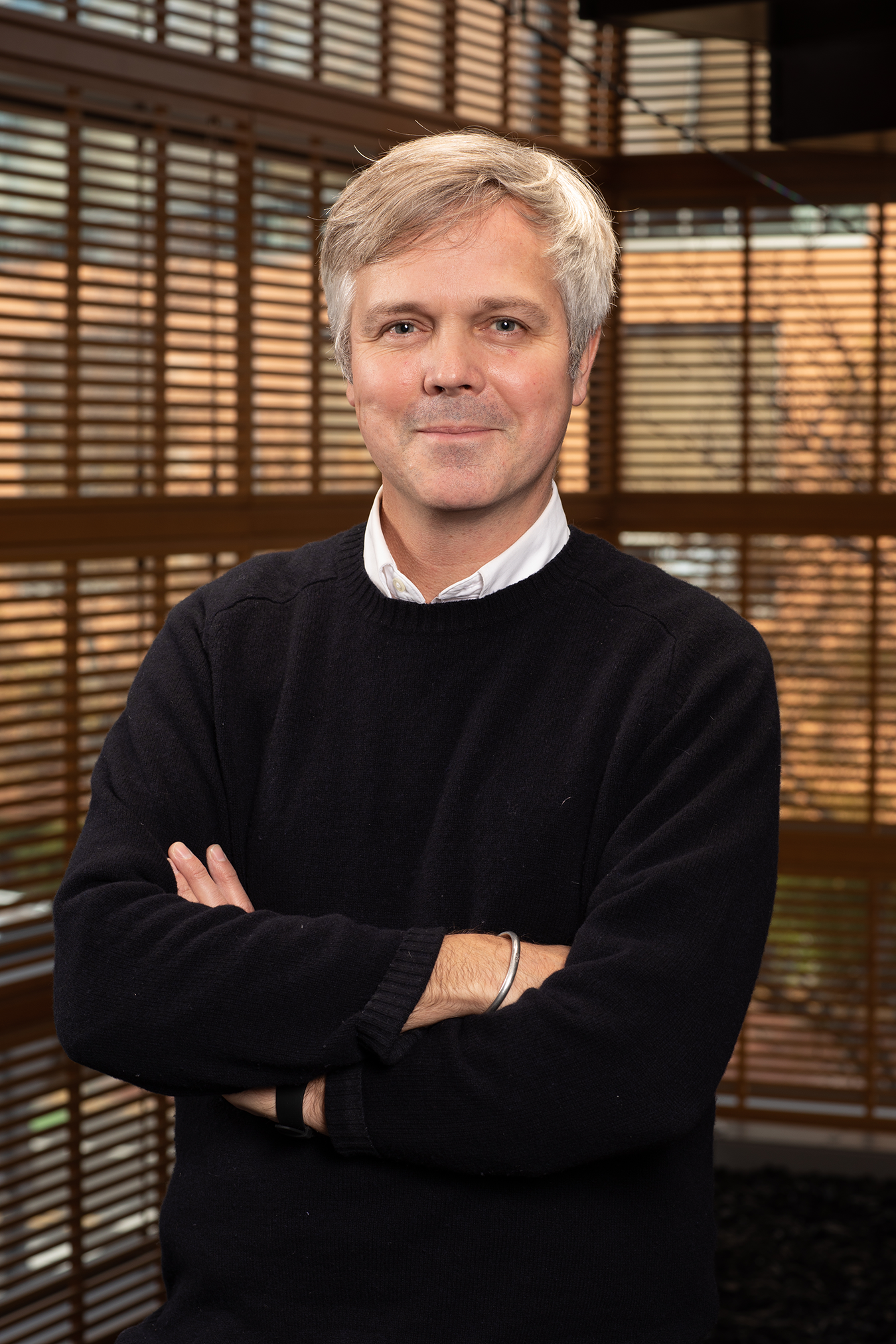
- Gavin Whitelaw, Executive Director of the Edwin O. Reischauer Institute of Japanese Studies, Harvard University

- Bahia Simons-Lane, Director, US JETAA and former President of JETAA Florida
Do you know about NABEA (the National Association for Black Engagement with Asia)?
**************************
We recently learned about the National Association for Black Engagement with Asia (NABEA) which seeks to connect Black Asia specialists in both the public and private sectors. They also hope to increase the representation of Black Americans engaging with Asia. Through their programming, they work towards building a mutually beneficial economic, political, social, and cultural relationship between Black America and the Indo-Pacific region.
There seems to be a natural connection between the JET alumni community and NABEA. And in fact, we’re currently aware of four JET alumni who are also members of NABEA:
- Jennifer Butler (Shizuoka-ken, 2001-2004) – Manager of Student Relations for the Ashinaga Foundation and former JETAA USA Country Representative and JETAA chapter president
- Mya Fisher (Kanagawa-ken, 2000-2002) – Founder of Global Equity Forward, a strategic consulting and advisory company for international inclusion, diversity, and racial awareness.
- Jody Dixon (Yamanashi-ken, 2009-20014) – Program Manager for the American Association of State Colleges & Universities overseeing their China-US Rising Star Study Program
- Savannah Williams (Shizuoka-ken, 2018-2020) – a Community Manager and Event Coordinator for Startup Lady Japan
According to Fisher, “NABEA is an important and growing community of Black Americans who are specialists actively engaged in Asia. Their publicly accessible and searchable database of Black, Indo-Asia experts is a great addition to the continued work of increasing representation and inclusion in the U.S.-Japan community specifically, and the Indo-Asia region more broadly.”
If you are interested in joining NABEA, go to their website for more info: http://usnabea.org/
And if you’re already a member, feel free to post in the comments section below and let everyone know!
WIT Life #350: サラリーマン川柳コンクール
Interpreter/Translator/Writer Stacy Smith (Kumamoto-ken CIR, 2000-03) presents WIT Life, a periodic series about aspects of Japanese culture such as art, film, food and language. Stacy starts her day by watching Fujisankei’s newscast in Japanese, and here she offers some interesting tidbits and trends along with her own observations.
明けましておめでとうございます! Hope everyone’s Year of the Ox has been getting off to a good start. With the cold plus Covid, it’s understandable if this winter season is not getting much love. Something that might bring a little brightness to these dark days are the salaryman poems courtesy of Dai-ichi Life Group. Every year this life insurance company sponsors this contest for 川柳 (senryū, or “three-line unrhymed Japanese poems structurally similar to haiku, but treating human nature usually in an ironic or satiric vein”).
As you might expect, these poems from the last fiscal year largely address issues of Covid and working from home. The top 100 senryū were willowed down from 62,542 entries, and they can be found here (scroll down to the light red rectangular box that says 「優秀100句はこちら」 and click the + sign on the right). To my knowledge the poems only exist in Japanese, but content-wise they are relatively simple and extremely enjoyable (some of the entrant’s names are entertaining as well). Happy reading!
WIT Life #334: Hikikomori shifting demographics
Written by professional Writer/Interpreter/Translator Stacy Smith (Kumamoto-ken CIR, 2000-03), WIT Life is a periodic series about aspects of Japanese culture such as film, food and language. Stacy starts her day by watching Fujisankei’s newscast in Japanese, and here she shares some interesting tidbits and trends along with her own observations.
The plight of Japan’s hikikomori (ひきこもり or voluntary shut-ins), has always been a topic that received a lot of buzz, but has primarily focused on young people affected by this phenomenon. However, according to a recent nationwide survey carried out by the Cabinet Office that was the first of its kind, recent trends indicate that it is actually older people who now comprise a larger percentage of Japan’s hikikomori population (gender-wise, men still comprise the majority of ![]()
![]() hikikikomori at a rate of around 3:1).
hikikikomori at a rate of around 3:1).
This BBC article characterized hikikomori as “modern-day hermits,” and describes how this condition is not only limited to Japan, but also seen in other Asian and European countries. In fact, the problem of loneliness and social isolation got so bad in the UK that it appointed its first designated minister for loneliness last year. Here in the States, loneliness has various deleterious effects, which have become Read More
By Mark Flanigan, Nagasaki (2000-04)
As a JET alumnus, I look back fondly on the four years I spent living and teaching in Nagasaki Prefecture. Serving on JET was, quite literally, one of those “life-changing” experiences, as it confirmed my career path in the direction of public service and global education. In the 15 years or so since my time in Nagasaki, I have been lucky to have had international roles in the U.S. government, in higher education, and at a private, Japan-focused non-profit foundation. I was even fortunate enough to return to Japan a second time, to earn my MA in Peace Studies in 2012 through the Rotary Peace Center at International Christian University (ICU) in Tokyo. Later, I served in a variety of roles in Manhattan with JETAANY between 2012-16.
My most recent career stage brought me back into the classroom, albeit in a different role and a new part of Asia for me. I am currently serving as a WorldTeach Fellow volunteer in Chittagong, Bangladesh, at the Asian University for Women (AUW). It has been both a challenging and rewarding transition back into teaching, as I felt a bit rusty in the beginning and took a bit of time to get back in the groove. Also, my main experiences with Asia had been almost entirely focused on Japan, China, and Korea. For me, South Asian history and culture was something I knew very little about up until a couple of years ago. Being here, I realized how comparatively little I knew about the diverse cultures of the Indian subcontinent of Asia. Nonetheless, it has proven to be an extremely rewarding transition, personally as well as professionally.
Me with some of my Pathways students in Bangladesh
Through a friend in New York City, I had first learned about AUW back in 2015. She had been a WorldTeach Fellow here a few years before, volunteering and having a really significant educational and cultural experience. The more I heard about her time in Bangladesh, the more I thought it sounded like a great opportunity to get back in the classroom while making a positive contribution to education for women at a significant institution like AUW. While I definitely enjoyed my four years in Manhattan, working as a Program Director with the Japan ICU Foundation (日本国際基督教大学財団), I also felt ready to take on a new challenge. I applied and was happily accepted as a new volunteer with WorldTeach, and assigned to AUW for the 2016-17 academic year.
AUW was founded in 2008 as a regional hub to help educate underprivileged women throughout different regions of Asia and the Middle East. With a liberal arts curriculum that promotes critical thinking and women’s empowerment, it is a truly encouraging place for young women who have faced numerous challenges in life due to poverty, gender bias, and sectarian conflict. With 600 students (and over 400 alumnae) from 15 different countries, including Nepal, Bhutan, Myanmar, Vietnam, Cambodia, Sri Lanka, Afghanistan, Pakistan, Syria, Palestine, and others, AUW is an amazingly diverse place. The dynamic environment, small class sizes, and daily interaction of people with many different ideas, perspectives, and cultures makes it an esteemed center of higher education in South Asia.
However, I almost missed my chance to be here. Less than one month before I was due to arrive at AUW, we heard the news of the terrible attack in Dhaka, the capital city of Bangladesh. All I knew was that international residents of the city (and their local friends and colleagues) had been targeted specifically in a vicious terror strike. The attackers, while a definite minority in terms of the general population, were sending a very clear and deadly message. Although the attack did not take place in Chittagong, it was great cause for concern among both WorldTeach and AUW staff, as well as present and future volunteers. At that time, it was not clear whether we would still be able to serve in Bangladesh, or how the program might proceed. Many safety protocols would need to be analyzed and revised before a final decision could be made. In the end we were still given the option to come, which I was definitely happy to hear.
I have now been here for seven months, teaching two different groups of students over the autumn and now spring terms. My classes are part of the Pathways for Promise Program at AUW, which is the recently developed entry point for women who have not had as much formal preparation to succeed in higher education. Many of them have come as former workers from the garment factories of Bangladesh, while others are daughters of Grameen Bank loan recipients, refugees from the persecuted Rohingya community, as well as indigenous minorities from the Chittagong Hill tracts region. In addition to Bangladeshis, Pathways students have come from Afghanistan, Cambodia, and Myanmar. They will take classes for approximately one year in Reading and Writing as well as Listening and Speaking, and also study Math and IT while participating in Community Time and Social Mentoring workshops and events.

A lovely display of Bengali cuisine
If they complete the Pathways Program successfully and meet all the exam requirements, they will advance to the one-year Access Academy and then an additional three years of undergraduate study at AUW. In all, the successful ones will graduate in five years with their bachelor’s degree in hand. Against all odds, this is their big chance to earn their college degree. Without the encouragement and funding support to match their own amazing dedication, it would most likely be impossible. It will not be easy for them. Many are far away from home and spend almost all of their time on the small but secure campus. They live in dormitories with 2-5 students per room, eat in the dining hall, and take all their classes together, so there is very little time for privacy or quiet reflection. Nonetheless, they are very eager to learn and make the most of this unique opportunity they have been granted.
It goes without saying that my students inspire me each and every day. Teaching them is really one of the biggest joys of my life here, and in many ways takes me back to my first experience teaching overseas in Japan. Although those two times are separated by about 15 years and many more miles, there are also some interesting parallels between them. Of the many things I have discovered over my time here thus far at AUW, one of the most interesting has been the surprising number of existing connections here between Bangladesh and Japan. As a former JET who later studied at ICU and worked to promote increased U.S.-Japan ties, it’s been a really pleasant surprise to find out about and help to build on these great bilateral bonds of friendship.
The first one, I discovered quite by accident. In the early part of the autumn semester, I was walking in the hallway outside of my office when I heard the distinct counts of “ICHI, NI, SAN, SHIIII!!” emanating from the level above. Intrigued, I climbed the staircase up to the next floor and was surprised to discover the gymnasium filled with perfect rows of students. They were in straight lines, balanced in strict stances, with fists alternately chambered by their side and then thrust forward in a crisp motion I instantly recognized. My mind wandered back to our small dojo in Hirado City, Nagasaki, where I spent countless hours drilling in those very same “kihon” movements. I was curious to find out more, so I made arrangements to return and observe a longer class in session.
It was then that I met Ms. Maria Chakraboty, their instructor, a remarkable woman from Bangladesh who has achieved her 5-Dan rank in Shotokan Karate. Maria serves as a real inspiration to her students, as AUW’s Associate Director of Physical Education and Karate instructor. Maria grew up in Chittagong, the same city where AUW is based, and faced hardships of her own due to people judging her negatively by her gender. She was strongly discouraged by others in her pursuit of Karate, but through the encouragement of her instructors, she has achieved a remarkable number of accomplishments. For her students, Maria is a living, breathing example of a successful adult woman, who has faced down discrimination and has continued her own personal growth through embracing the Japanese art of Karate. She has been able to impart her wisdom and experience to hundreds of young students through the years. Such is the wonderful environment of a cross-cultural, liberal arts university like AUW.
Maria (Center) training with some of her AUW students
In addition to Karate, there are other tangible bonds of kizuna between AUW and Japan. Attending the University’s Club Fair this past autumn, I was happy to learn that AUW students are involved in all kinds of social and academic club activities. Similar to Japan, students here balance their time between formal classes and organized clubs, like Model UN, Animal Welfare, a variety of sports, and other pursuits. Most interestingly to me, I discovered that there is a very active group of students on campus who are involved in the AUW Japan Circle Club! They are extremely genki and know an amazing amount of things regarding Japanese culture. They study Japanese on their own (as it is not taught here), read manga, watch anime, and even make their own kimono and other clothing by hand! Upon meeting them, I shared my experience as a JET alumnus and former ICU graduate student. They asked me to serve as their faculty advisor, to which I most happily agreed!
With some of the AUW Japan Circle Club students (and their hand-made clothing)!
I have been very happy to be working with them on various projects here this term. Most specifically, we have planned and organized a Japanese book drive among some of my colleagues and friends in Japan and Hong Kong. Through their kind and generous help, we have now received about seven boxes full of manga, books, magazines, language textbooks, and Japanese-English dictionaries from abroad! All of these were donated to the AUW library, so students can access them freely anytime. As none of our students have been able to visit Japan as of yet, they really love the chance to see any kind of “hon mono” firsthand. One Tokyo friend in particular also sent a variety of delicious Japanese candies, which were a big hit with the students! We are still interested in receiving any other items from Japan, if anyone would like to donate. Additionally, the students performed a number of Japanese songs (in Japanese) and dances for our recent Lunar New Year Festival. We hope to develop exchange partnerships with AUW and universities in Japan, in order to offer study abroad opportunities in both directions. Interestingly, at least one AUW alumna is now studying in Japan, earning her Master’s degree at the United Nations University (UNU) in Tokyo!
Lastly, there is a very robust level of support for AUW in Tokyo. As part of the global support network for AUW students, a number of highly-accomplished and very influential donors make up the “Friends of AUW Japan” organization. Among them is Ms. Kathy Matsui,Vice Chair of Goldman Sachs Japan,who has a long and deep connection to AUW. In 2007, she was chosen by the Wall Street Journal newspaper as one of the “10 Women to Watch in Asia” for her work on the “Womenomics” theme, and serves as a board member of the AUW Support Foundation. Ms. Matsui and her husband, Mr. Jesper Koll, have been major donors to AUW since its inception, and they continue to look for ways to promote exchange between AUW and Japanese universities and companies. In addition, First Lady Akie Abe serves as an official Patron of AUW and has been actively involved with a number of fundraising efforts on behalf of the university in Tokyo over the past few years. Lastly, AUW has enjoyed very generous support through the past several years from a number of Japanese companies like HITACHI, MITSUI & CO., TOSHIBA CORPORATION, and UNIQLO.
First Lady Akie Abe (center) and Ms. Kathy Matsui (second from right)
In conclusion, I would say my time here in Bangladesh has been a wonderful journey thus far. In many ways, it’s a completely new (and sometimes bumpy) experience for me, living in South Asia and in a developing, Muslim-majority country for the first time. Culturally, it’s much different than what I was used to, but that’s been a good opportunity to broaden my own horizons and question my preconceived notions about life as well. My students in the Pathways for Promise Program specifically, and AUW students in general, have taught me so much and really inspired me through their own energy, resilience, and desire to learn. As a nice coincidence, this latest chapter in my career also brings me back to teaching and to Japan in many ways. I am happy to have so many “natsukashii” moments here, to help teach these remarkable young women, and also to be in a position to try and advance the relationships between people in Bangladesh and Japan. In some ways, it’s the most unexpected yet personally satisfying addition to my time here at AUW. I’m happy to make the most of all these fortuitous connections during my time here in Bangladesh and beyond.
=================================================================================
Mark Flanigan is currently a WorldTeach Fellow volunteer in Chittagong, Bangladesh, at the Asian University for Women (AUW). Mark served as an ALT in Nagasaki Prefecture from 2000-4, and later studied for his MA in Peace Studies as a Rotary Peace Fellow at the International Christian University (ICU) in Tokyo from 2010-12. After graduating from ICU in 2012, he spent four years working for the Japan ICU Foundation in NYC. He has also held leadership roles in the JET Alumni Associations of both New York and Washington, DC. He can be reached at markinmitaka(at)gmail.com

Japan Times: Osaka bets big on TOEFL to boost English levels
****************************
Interesting article about the Osaka Prefecture Board of Education’s English education initiative and further discussion of the “Super English Teachers” (SETs). Former AJET Chair Matthew Cook (Osaka-fu, 2007-12) is not quoted but is very involved in the initiative. Matt is also the founder of the Kansai JET Alumni group.
Osaka bets big on TOEFL to boost English levels
In the perennial debate about English-language education in Japan, there is widespread agreement that the system is archaic and change is needed. The consensus stops there.
Everyone concerned has a panacea: more (or less) assistant language teachers, more teacher training, more technology, more of a focus on language production, less testing, better testing, smaller class sizes, eviscerating and overhauling the curriculum, greater use of English in class. The remedies are as numerous as the debate is old. But in a consensus-bound country such as Japan, change, if and when it comes, is usually incremental — and perhaps then, even obsolete.
No one could accuse Toru Nakahara, the superintendent of education for Osaka Prefecture, of kowtowing to the status quo. He is responsible for pushing through a raft of initiatives, chief among them the introduction of TOEFL (the Test of English as a Foreign Language) at top-performing high schools, which will be taught by an elite group of teachers earning approximately ¥8 million a year. (Disclosure: I teach part-time at one of these schools.) From the board of education’s perspective, this is radical. But is it also just a formulaic riff on the “teach to the test” approach? Read More
JQ Magazine: JQ&A with Melody Wong on the Drop That Eggroll Podcast

“JET gave me insight into a deeper rooted area of the Japanese culture that I appreciate. There were so many similarities of Japanese culture that I saw in my Chinese culture, and it really made me appreciate both as separate entities.” (Courtesy of Melody Wong)
By Wendy Ikemoto (Ehime-ken, 2006-2011) for JQ magazine. Wendy is a Hawaii-transplant and current Secretary of the JET Alumni Association of New York (JETAANY). When she isn’t working with librarians, you’ll find her visiting JET friends around the globe.
Melody Wong (Okayama-ken, 2011-13) is a native of Los Angeles and a member of the JET Alumni Association of Southern California (JETAASC). Prior to JET, she attended the University of California at Riverside and worked in finance for half a decade before deciding to switch things up to teach English in Japan. In December 2013, she launched the Drop That Eggroll podcast with her co-host and good friend, Alex Lau. Together, they explore subjects that span across Asian ethnicities, ranging from fun topics like pretty Korean boys and Filipino cuisine to more controversial fare like the Tiger Mother’s tips for success and ANA’s “whiteface” commercial.
Six months after DTE’s launch, JQ caught up with Melody to get the scoop on how the podcast came to be, what the future holds for it, how JET has influenced her views on the Asian culture, and why you all should be tuning in.
Can you start by describing your background for us?
I’m a second-generation Chinese American, born and raised in Los Angeles. I speak Cantonese and English fluently. The only Asian country I’ve ever lived in was Japan (two years), though I’ve traveled back and forth between China and the U.S. throughout my childhood.
Where were you on JET?
I was a JET in a tiny little town called Kibichuo-cho in the Okayama Prefecture. My town was so small and rural that even people in Okayama barely knew about it. There was no train station, so no one could really get to me unless they had a car, so I drove out everywhere all the time. I was an assistant language teacher (ALT) to multiple elementary and junior high schools.
How do you and Alex know each other?
Alex and I met through our mutual friend Larry. In high school, I was an avid member of the community service club, Key Club. My high school was part of a larger division that included lots of other local high schools, which is how I met Larry. Larry attended the Art Center College of Design and became friends with his classmate Alex. Through some social engagements, Alex and I met. All three of us, including several other friends, went on a trip to Japan in 2010, which was the trip that ultimately influenced me to join the JET Program.
JET alum Roland Kelts on Japan’s “Generation Resignation” in Adbusters
*****************
Another thought provoking article by JET alum author and writer Roland Kelts(Osaka-shi, 1998-99), this one in the current issue of Adbusters.
The Satori Generation
A new breed of young people have outdone the tricksters of advertising.
Roland Kelts, 07 May 2014
They don’t want cars or brand name handbags or luxury boots. To many of them, travel beyond the known and local is expensive and potentially dangerous. They work part-time jobs—because that is what they’ve been offered—and live at home long after they graduate. They’re not getting married or having kids. They’re not even sure if they want to be in romantic relationships. Why? Too much hassle. Oh, and too expensive.
In Japan, they’ve come to be known as satori sedai—the “enlightened generation.” In Buddhist terms: free from material desires, focused on self-awareness, finding essential truths. But another translation is grimmer: “generation resignation,” or those without ideals, ambition or hope.
CLICK HERE to read the rest on ADBUSTERS: https://www.adbusters.org/magazine/113/satori-generation.html
Click here to read more of Roland’s articles from Adbusters: https://www.adbusters.org/authors/roland_kelts
Japan Times: Osaka Embraces English Reformation
Former AJET Chair Matthew Cook (Osaka-fu, 2007-12) has been heavily involved in this cutting edge effort to improve Osaka’s English education system and is quoted in the article.
Osaka embraces English Reformation
BY TERU CLAVEL
While Osaka Mayor Toru Hashimoto’s controversial political antics have increasingly drawn criticism, little attention has been paid to how his leadership has prompted the most progressive reforms of English-language education in the nation. Hashimoto, who served as Osaka’s governor from 2008-11, made possible the appointment of fellow Waseda Law School graduate Toru Nakahara as superintendent of the Osaka Prefectural Board of Education, charging him with the task of empowering students to compete on a global stage.
Only in Osaka will students in the public school system have the opportunity to start preparing for the TOEFL iBT — an internationally recognized English-language proficiency exam for non-native speakers administered over the Internet that tests reading, writing, speaking and listening skills for entrance to English-speaking university overseas — in grade one of primary school.
With the urging of Mayor Hashimoto, Nakahara — who also graduated from the University of Michigan Law School and was a practicing attorney at a California firm for 10 years — left the private sector and took a substantial pay cut to become the principal of Izumi High School in Osaka in 2010. In 2013, Nakahara became Japan’s youngest-ever superintendent at age 42, overseeing 1,600-plus schools, and he formed what is known as the English Reformation Project Team.
Nakahara’s accomplishments in the United States and at Izumi High School have led him to be recognized as an education innovator.
“One thing I noticed when I was in Ann Arbor (Michigan) Read More
Japan Times: “Japanese firms mostly unaware of benefits of hiring from JET ranks: poll”
Article from the Japan Times about a Keizai Doyukai survey that indicates that Japanese companies are behind the curve compared to foreign companies with regard to hiring JET alumni, even though they possess qualities such as familiarity with Japanese language and culture than many Japanese companies need.
Note to Japanese companies: If you want to reach JET alumni, it’s as easy as e-mailing your job listings to jetwit [at] jetwit.com. It’s the best way to disseminate your job listings since JETwit jobs posts get echoed by JETAA chapters, and it’s free!
Japanese firms mostly unaware of benefits of hiring from JET ranks: poll
BY MASAAKI KAMEDA
STAFF WRITER
Japanese companies are less aware than their foreign counterparts of the government-sponsored Japan Exchange and Teaching Program and are thus missing out on an opportunity to hire foreigners who have the skills they need, a recent survey by a major business lobby showed.
The Japan Association of Corporate Executives (Keizai Doyukai), which conducted the survey released Friday, noted that domestic companies need to strategically hire former JET teachers and urged the government to create a mechanism to facilitate match-making opportunities for them.
The Keizai Doyukai survey, carried out between late November and December, said that only 18 percent of the 167 responding domestic companies knew about the JET program, and that only nine had hired former JET personnel.
By comparison, 83 percent of the 23 foreign companies and embassies who responded said they knew about the program and had employed past JETs. Read More
BBC: Fukushima schools rebuild after disaster
It would be interesting to hear any comments or perspectives from Fukushima JETs or alums about what they describe in this BBC article. (Thanks to Eden Law of JETAA New South Wales for posting it to their Facebook group.)
Fukushima’s Schools Rebuild After Disaster
“How do you re-build an education system destroyed by a disaster? The OECD’s Andreas Schleicher describes the efforts in Japan, two years after the nuclear accident in Fukushima.”
Link to full article: http://www.bbc.co.uk/news/business-21576192
JET alum Roland Kelts column in Time Magazine on Japan’s Identity Crisis and Right-Wing Rhetoric
********
A thought provoking article by JET alum author and writer Roland Kelts(Osaka-shi, 1998-99) from the current issue of Time Magazine.
The Identity Crisis That Lurks Behind Japan’s Right-Wing Rhetoric
Here’s a quote:
“Japan is a country whose identity has been bowdlerized, hollowed out by a dream of Western dominance that no longer exists. It may make sense to see its recent surge in nationalism as a dumbed-down version of Japanese adolescence. This is a country spun around by its own single-minded pursuit of progress, and it has no idea who it’s supposed to be today.”
Here’s a link to the full article: http://world.time.com/2013/05/31/the-identity-crisis-that-lurks-behind-japans-right-wing-rhetoric/
What would doubling the JET Program look like?
A thoughtful post about the implications of an expanded JET Program from the Mutant Frog Travelogue blog. One of the things I like about this piece is that it attempts to concretely think through some of the implications. The other is that it actually factors in different forms of Return On JET-vestment that tend to be brushed aside or ignored in other commentaries or critiques of JET.
What would doubling the JET Program look like?
Here are a few excerpts:
Recent news reports suggest that the LDP is planning to propose doubling the JETProgram in three years and placing JET language assistants in all elementary, middle, and high schools within a decade. There are around 38,000 such schools in Japan, so that’s aLOT of ALTs!
****************
It also means more “Japan hands,” maybe even double, and this can cut in different ways. I feel like Japan is sorely in need of talented Japanese-to-English translators, so an influx of native English talent that could eventually progress to ace-translator status is a good thing. At the same time, the increased supply in the market could put pressure on prices, and who knows maybe some whipper snapper could come after my job some day.
****************
From what I gather, the job of an ALT is generally to supplement a Japanese teacher of English by helping with pronunciation and various other tasks. Maybe I just don’t get around enough, but I cannot recall ever hearing someone even try to argue that they are an essential part of the learning process or that what they do has an appreciable benefit to the level of English ability in Japan. I don’t think that is really a problem though because of the program’s other upsides.
On the other hand, what I have heard and experienced is that ALTs can help inspire students to discover the joys and rewards of learning English or encourage them to keep going. I think the value of that should not be underestimated because it is life-changing and the ALTs deserve huge credit for it.
****************
CLICK HERE to read the full post.
Japan Times: LDP looks to double JET Program’s ranks in 3 years
Good news on the horizon for the JET Program. And for the future of JETAA as well.
LDP looks to double JET Program’s ranks in three years
By Ayako Mie, Staff Writer
The number of teachers hired for the Japan Exchange and Teaching Program would be doubled in three years under a proposal drafted by the ruling Liberal Democratic Party to boost Japan’s global competitiveness and nurture international talent.
According to the draft of a midterm report by the LDP’s economic revitalization headquarters obtained Monday, the number of JET teachers would be increased to 10,000 from about 4,360 in 2012. The teachers also would be dispatched to all elementary, junior high and high schools within 10 years.
The JET Program was targeted for wasteful spending by the Democratic Party of Japan’s “shiwake” government revitalization unit before the young party was kicked out of power in the Lower House election in December.
The LDP views the use of native English speakers as vital to improving English-speaking ability at a time when it is moving toward making a passing score on the Test of English as Foreign Language mandatory for entering and graduating from college.
The proposal is in line with the growth strategies Prime Minister Shinzo Abe mapped out last Friday ahead of the July Upper House election. The strategies include globalizing the Japanese workforce and increasing the number of women in it by extending the length of maternity leave to three years from 18 months.
The proposal will be part of Abe’s real basic economic policies, which are being compiled by the Council on Economic and Fiscal Policy for release in June — just a month before the House of Councilors election in July.
Fleshing out Abe’s pledge to fight the nationwide shortage of day-care centers, the LDP’s plan will also propose tax breaks for spending related to housekeeping, including baby-sitting and housekeeping fees.
According to media reports, the LDP will also try to lure back Japanese companies that have moved overseas to escape the strong yen by offering tax breaks for closing any factories built abroad and for building new ones in Japan.
Halting the manufacturing exodus will help prevent the hollowing out of Japanese industry.
JCIE Special Report on Giving to Japan and the Current Status
Thanks to Jim Gannon (Ehime-ken, 1992-94), Executive Director of the Japan Center for International Exchange (JCIE/USA), for sharing this uniquely informative and eye-opening report from his organization on what’s been going on in Japan with regard to recovery and donations.
From a JET perspective, it’s very useful information as a point of reference with regard to the strength of US / Japan ties in the areas such as sister city / state, and JET alumni efforts. It also really highlights the depth of the linkage between the two countries extending beyond the security and economic relationships to the personal level connections that are, for the most part, not simply based on having a large immigrant community. Additionally, it notes the state of the nonprofit sector and volunteerism in Japan and to increasing awareness of how that sector would benefit from developing further.
US Giving for Japan Disaster Exceeds $710 Million
Record Amount for Overseas Disaster in a Developed Country
http://www.jcie.org/311recovery/usgiving3.html
Intro Paragraph: In the two years since Japan was struck by an earthquake and tsunami of apocalyptic proportions, Americans have donated $712.6 million to help with relief and recovery efforts. These figures, which come from a survey conducted by the Japan Center for International Exchange (JCIE), indicate that the outpouring of US giving is the largest ever for a disaster in another developed nation, and the fifth most generous US response to any disaster in history.
JET Reference: In many instances, fundraising campaigns were driven by people who had connections to Japan through overseas study or from working in the country through programs such as the Japan Exchange and Teaching Program, and for others it came from their affinity for Japanese anime, sports, language, or traditional culture.
On the Non-Profit Sector in Japan: In the immediate aftermath of the disaster, a handful of American commentators with limited knowledge of Japan advised against donating because Japan is a rich country. However, they overlooked the fact that, while Japan is a rich country, its nonprofit sector is relatively poor and underfinanced. US donations ended up having an outsized impact precisely because the funding base of Japanese nonprofits has traditionally been so limited and because these nonprofit organizations play such a crucial role by performing services that government agencies cannot manage, thus filling the gaps in the disaster response.
CLICK HERE to read the full report.

